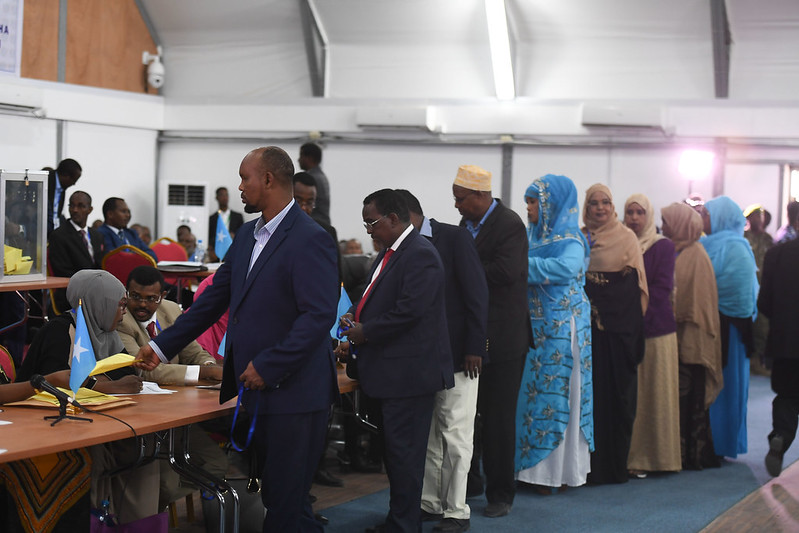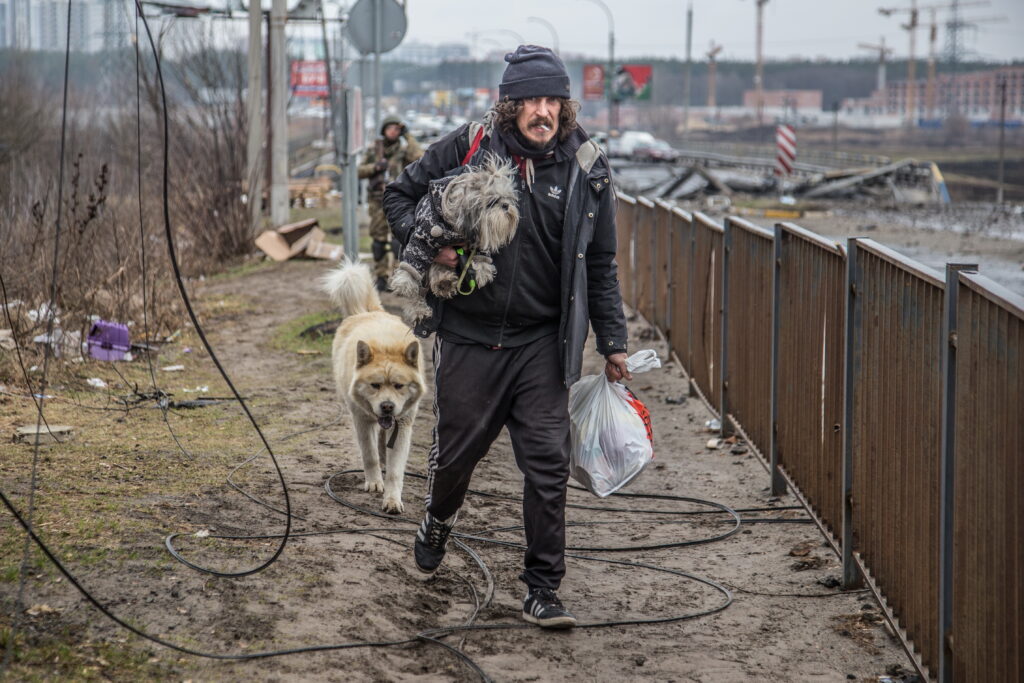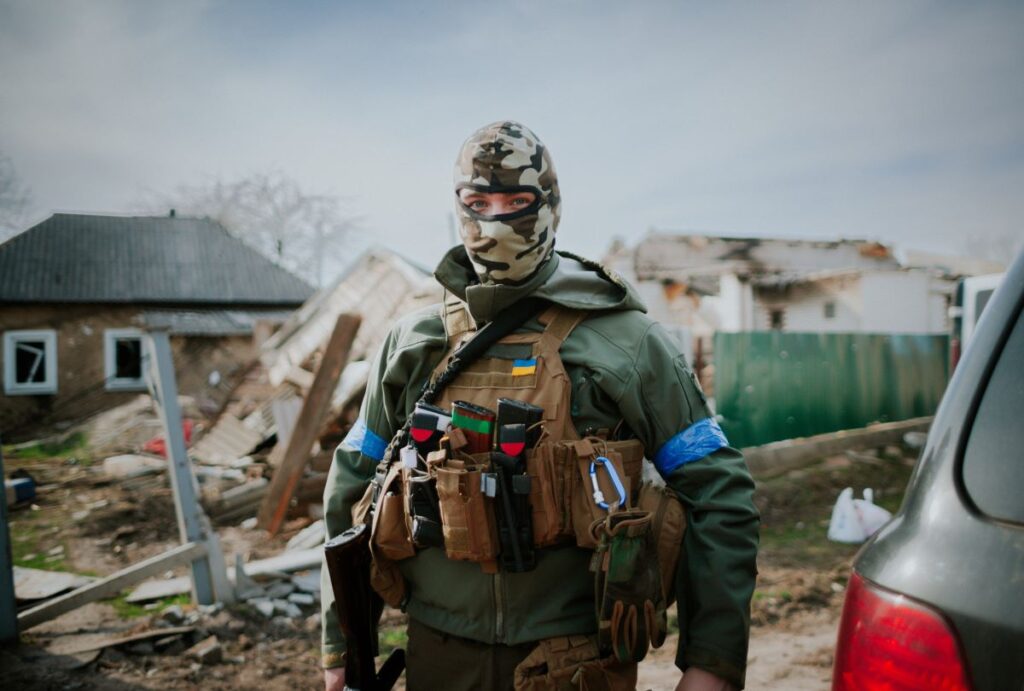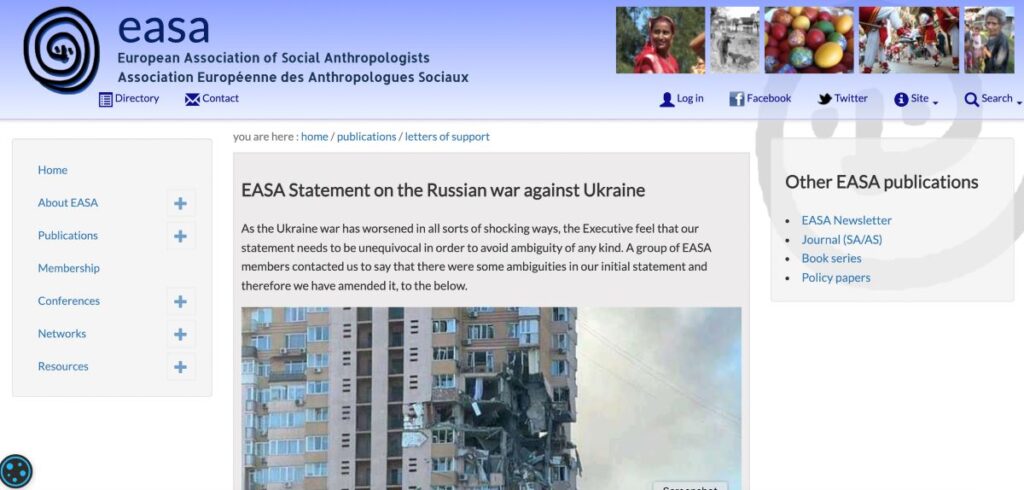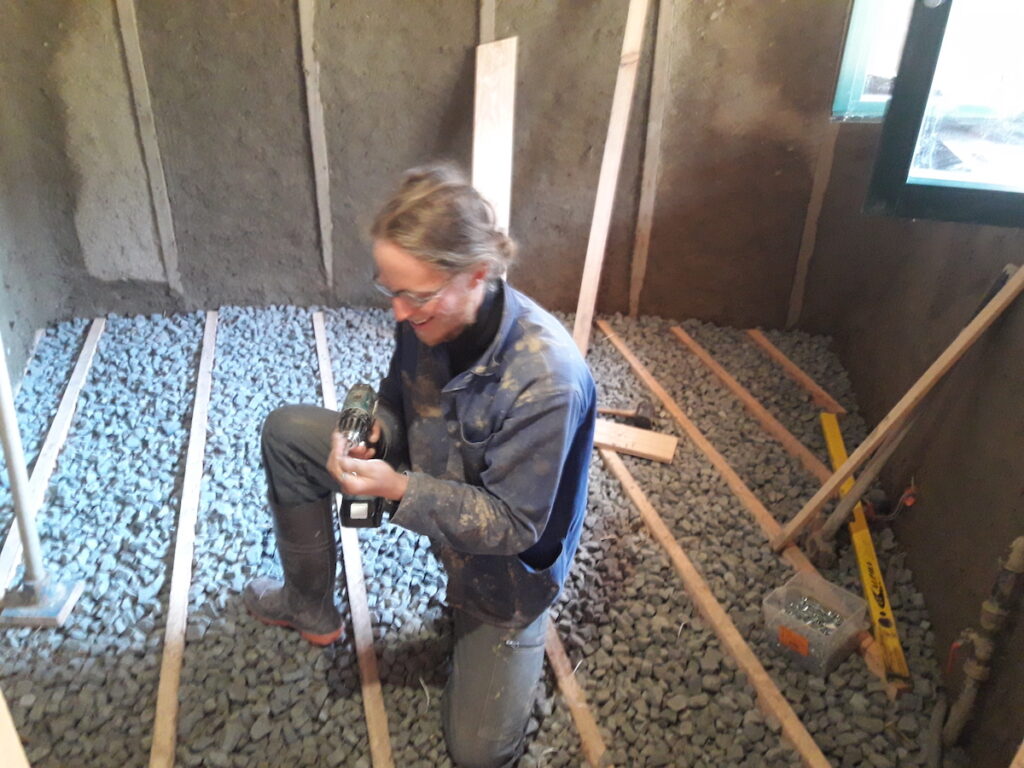“Near Ahmedabad’s civil hospital,
in a small dilapidated house.
A dog lives with his wife and their children.
After two days, the dog returns to his home.
After seeing him, the wife says:
“Oh! Look at your face, it is glowing
First tell me where you have been for two days?
The dog shakes his tail and tells her with a laugh:
“Do you know today I ate human flesh,
And the human was alive”.
I return to this episode every time, ‘Murdon ka Gaon’ (The Village of the Dead). I watch it once more, working on a translation to Italian for a film screening, moving from the English subtitles while paying attention to the original Bhantu words that by now I mostly understand. I pay attention to the words, the pace of the story, I stop and listen again. Finding words in Italian, my mother tongue, strikes me – the words are more emotive than they sounded in English. They touch me more; perhaps it is also in the slow attentive viewing that I let them touch me.
The core of the episode is simple: shot in a dark room, four people sit in a closed circle, telling a story, their faces folded into shadows by a candle placed in the middle. The image is dark and grainy, their voices varied but all intensely expressive. Sometimes, we cut to the image of a dog. Dogs sleeping, a dog roaming the streets at night, a dog licking its wounds. We move between close-ups of the faces of the actors and, occasionally, the dog. As I watch the film I am struck by the vivid, yet dark affects it provokes. The simplicity of the images on camera, and the ekphrastic storytelling (Favero 2018) allows you to watch and at the same time imagine the unimaginable – that which, in fact, is too inhuman to be represented.
The story, an adaptation of the Hindi short story by Dharamvir Bharti, ‘Village of the Dead’, is told from the perspective of a dog, a dog that roams the streets at night to find half-dead bodies, the bodies of migrants, of slaves, of corona patients that are so hungry and thirsty that they begin eating themselves. It is a story of thresholds, of the threshold between the living and the dead, between humans and non-humans, between humans and slaves, between humans and hungry humans.
Finding the city’s hospital dark and empty we follow the dog wandering towards the highway in search of food. Near the highway, the dog encounters thousands of migrants and their children walking “dhak, dhak, dhak, like machines” – an encounter that evokes the brutal images of the bleeding feet of migrants, walking thousands of kilometres to return home in the face of a lockdown of the country announced with a few hours’ notice, a mass migration estimated to be the largest in the history of the subcontinent. The dog sees a hut perched against some tall buildings, where a boy gasps, barely able to form the word water: “pa… pa … pani”. There is only an old man to listen to him, himself too helpless to help. “I will get relief if you die”, the old man shouts at the boy in an angry tone. The dog continues wandering through hallucinatory scenes of poverty, of hunger, of mothers trying to feed their children, of people who are too helpless to love, of humans that may have been dead but are in fact half-alive, eaten by the dog, then by flies, and who are so hungry and thirsty that they too drink their own blood. After digging its teeth in the flesh of a hungry human:
“The dog got ashamed. And put his head down
Because he ate the flesh of a hungry, slave migrant.
Corona patients and hungry slaves are not humans”
I find the storytelling format reassuring, about the four people talking softly, intimately – the intimacy of a story read before bedtime. The voice of the narrator, the dog, is soft. Perhaps this is done on purpose, like in many (terrible) folktales, where you are invited to trust, relax, be guided by the narrator to unimagined and terrifying places. This intimacy contrasts with the shocking images that the telling provokes, with the angry voice of the old man who tells the boy that the only relief is death. It contrasts with the reality that, perhaps unlike in folktales, we are presented with following the story.
This vignette relates to one amongst several disturbing moments from an arts-based research project set in western India, which has sought to document and intervene in one of the most difficult collective experiences in recent human history. It was in May 2020, during the first wave of India’s Covid-19 pandemic, that a collective of indigenous theatre artists associated with Budhan Theatre and belonging to the ‘Denotified’[1] Chhara tribe began an extensive project of documentation of the lockdown and post-lockdown experiences of their communities through film and digital technology. This project had, by early 2022, produced two series of video podcasts in indigenous languages, disseminated through community social media platforms and messaging services such as WhatsApp. The first series filmed during the early days of the pandemic between May and December 2020 focussed inward, at the experiences of pain and loss of their own Chhara community. Starting in January 2021, the second series moves outwards, to document the experiences of other Denotified and Nomadic Tribes in the region and across the country. The third series, underway during this writing, brings the skills and experience developed beyond DNT communities by training young leaders from other marginalised groups in filmmaking.
Episodes in the series address the health, socio-cultural and politico-economic dimensions of the pandemic through multiple art forms that include theatre performances, story-telling, songs and poetry alongside more conventional forms of documentary film making such as interviews, fact sharing and event capture. They cover topics ranging from health and safety measures, changes in death and marriage rituals, precarious livelihoods, the lives of children and the gendered unfurling of the pandemic. The podcasts are an attempt to tell stories of the pandemic that do not find space in mainstream public spheres, to speak to one’s own community in one’s own language, as a companion, a community space in which to make sense of unprecedented suffering where the precarity, disenfranchisement and marginalisation of centuries took on another dimension altogether, where the fault-lines of a post-colonial society, subsumed in the everyday, rose to the gaze as the horrific realities of the reduction of the human to the inhuman. It is in this context that this particular episode serves as something of an index through which to navigate this moment.
In the episode, the narration of collective suffering, made all the more effective through the absurdist use of the voice of the street dogs, sets the scene for an individual narrative of loss. Following the story told in a scantly lit room, we move to a brightly lit interview setting, with a widow and her son soon after they lost their husband and father to Corona. Sitting in a chair outside her house, dressed in a white ‘good’ sari, the widow speaks calmly. The widow is well held-together, as is her son. They do not cry. They both demonstrate utmost dignity, precisely that which has been denied to them, and which differentiates the dead and the living. As they speak, however, the precarity of their situation becomes clear: the debts they have taken to pay hospital bills, the unpaid school fees, the loss of livelihood. At the end of the interview, still keeping her composure, the widow turns to the camera with her hands joined pleading the government for help. Glimpses of death and its rawness break through the frame of respectability as interspersed with their story is the WhatsApp footage of the husband / father in hospital, intubated, gasping for breath – an image of the physical suffering of the disease that has been invisible from most representations of the pandemic. Contrasting with the composed telling of his story the image takes us back to “the village of the dead” – to that suffering beyond the human which only a dog can recount.
The telling of this story, and the images that it both evokes and presents, is an attempt at disturbing the political order of images and their associated experiences – and the relationships of visibility / invisibility that obliterate certain kinds of suffering and the possibility of its memory. Less than a year after the second wave of the Covid pandemic in India, its sheer horror and the absolute failure of the state to address it, is being aggressively erased. The various elements of the catastrophe, and in multiple registers are being denied – be it in terms of numbers[2], of causation of death and morbidity, of narratives of loss, emotional and spiritual distress – are thus at the risk of being ‘aggressively forgotten’. The project of holding on to experience, of creating portals to memory is thus a complicated affair, bringing together the material conditions for this creation, the emotive and affective challenges of recounting, the historical struggle of some of the most marginalised peoples of the world to articulate an intelligible voice, and the dramatic shifts in the materiality of public spheres, aesthetic and artistic practices in a post-COVID world.
This production of images also forces a reconsideration of the ethical debates around representations of suffering that frame ethical protocols within academia. In the late 1980s, at a time when shocking images of wars and famines became widely broadcasted, medical anthropologists criticised the ‘globalisation of suffering’ through which images become appropriated to appeal to global audiences (Kleinman and Kleinman 1996; see Ong 2019 for more recent debates). Scholars then argued that these iconic images involved a problematic commoditisation, and therefore thinning out, of the experience of suffering. Instead, they called for a kind of moral witnessing that is reflexive, that accounts for local realities by involving local participants in the development of images and interventions. These debates, however, continue tend to be structured by an imagination of the filmmaker, the anthropologist, the researcher, the producer of representations as outsiders, whereas those represented are imagined as objects bereft of agency. At the outset then, the representation of suffering itself comes to be suspect as a form of exploitation, and subject to technologies of taming, of decaffeination, so that representations may be considered and consumed without an engagement with the experience itself. There is thus a crucial misalignment between these ethical preoccupations aimed at protecting the vulnerable and the demand of communities to be heard and seen. The pandemic put indigenous communities in India in the grips of a devastating humanitarian crisis. Their vulnerability was greater because of their inability to enter and become visible in the public sphere. If we engage with indigenous groups as active consumers and producers of images – through mobile phones, social media and through artistic practices like film and drama – what are the material, or ethical concerns that underly the making of images? What does it mean for a research to be led by the community?
In the following weeks we shall in this series of blogposts, share episodes from the project, alongside reflections on the questions that they force open or complicate, around the changing nature of collaborative research, the transformation of embodied performance into digital objects and processes, the emergence of a new visual and political language around suffering and the place of death in current political formations.
Alice Tilche is a lecturer in Anthropology and Museum Studies at the University of Leicester, UK. Her research at the intersection of art and activism employs visual, collaborative and arts-based methods to research social transformations – including work on the cultural politics of indigeneity, migration, nationalism and most recently Covid-19. Alice’s book Adivasi Art and Activism: curation in a nationalist age was published with Washington University Press in 2022. Her collaborative film projects including Sundarana (2011), Broken Gods (2019) and Budhan-Podcast (2021) have been selected for a number of international film screenings and festivals.
Akshay Khanna is a Delhi-based Social Anthropologist, International Development Consultant, theatre practitioner and amateur chef, with training in Law and Medical Anthropology and the author of Sexualness (2016, New Text), which tells a story of Queer movements in India, develops a framework to think the sexual from the global south, and introduces Quantum Physics into the study of the sexual.
References
Kleinman, Arthur, and Joan Kleinman. “The Appeal of Experience; The Dismay of Images: Cultural Appropriations of Suffering in Our Times.” Daedalus 125, no. 1 (1996): 1–23. http://www.jstor.org/stable/20027351.
Favero, Paolo. 2018. The present image. Palgrave MacMillan. https://doi.org/10.1007/978-3-319-69499-3_5
Ong, Jonathan Corpus. “Toward an Ordinary Ethics of Mediated Humanitarianism: An Agenda for Ethnography.” International Journal of Cultural Studies 22, no. 4 (July 2019): 481–98. https://doi.org/10.1177/1367877919830095.
Notes
[1] ‘Denotified’ refers to tribes were ‘notified’ as born criminals during the British colonial rule under the 1871 Criminal Tribes Act. Despite their denotification five years after India’s independence the stigma of criminality continues to be associated with these groups, depriving them of citizenship rights and entitlements. The population of India’s Denotified and Nomadic is estimated to be around 10 % of India’s total population.
[2] The World Health Organisation estimates that the total number of excess deaths associated with the COVID pandemic in the year 2020 and 2021 is about 47 lakh/4.7million. The Government of India in turn rejects the report and insists that the number is 1/10th of the WHO estimate.
Cite as: Tilche, Alice and Khanna, Akshay. 2022. “The Village of the Dead.” Focaalblog, 31 May. https://www.focaalblog.com/2022/05/31/alice-tilche-akshay-khanna-the-village-of-the-dead/
